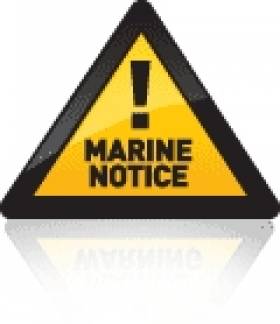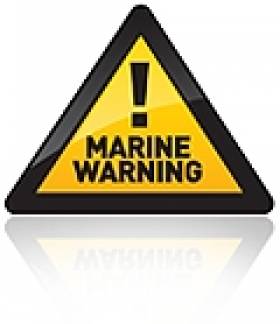Displaying items by tag: ECDIS
Marine Notice: ECDIS Training On Vessels Not Using ECDIS As Primary Means Of Navigation
#MarineNotice - The Department of Transport, Tourism and Sport (DTTAS) wishes to advise that the master and navigating officers on any vessel fitted with electronic chart display and information systems (ECDIS) or an electronic chart system must be appropriately trained.
This requirement still applies when the equipment is not being used as the primary means of navigation, in accordance with the provisions of the Standards of Training, Certification and Watchkeeping for Seafarers (STCW) Convention, Regulations I/14 & VIII/2. This is also required in accordance with the provisions of the International Safety Management (ISM) Code, part 6.
Further guidance on ECDIS training is provided in Marine Notice No 51 of 2011.
#MARINE NOTICE - The Department of Transport, Tourism and Sport (DTTAS) has issued a safety notice for all users of Electronic Chart Display and Information Systems (ECDIS).
Following an announcement by the International Maritime Organization (IMO) concerning potential display anomalies in some ECDIS systems, the International Hydrographic Organization (IHO) issued an 'ENC Data Presentation and Performance Check' in October 2011 to assist mariners and help determine the extent of the issues.
Reports from sea received by the IHO confirm that a number of manufacturers’ ECDIS fail to display some significant underwater features in the 'Standard' display mode.
As a result, these ECDIS must be operated in 'Full display' or 'All display' mode in order that all significant objects are visible to the mariner until a software upgrade is made available.
The notice also warns that earlier versions of the ECDIS manufactured by the Japan Radio Co (JRC) will not display some types of wreck and underwater obstructions (including stranded wrecks) in any display mode. These models of JRC ECDIS must be used in conjunction with paper charts, and affected mariners should contact JRC or their suppliers to arrange remedial action.
More details are included in Marine Notice No 23 of 2012, a PDF of which is available to read or download HERE.
Notice on Mandatory Training for Navigation by ECDIS
The latest Marine Notice from the Department of Transport, Tourism and Sport details the training requirements for the use of Electronic Chart Display and Information Systems (ECDIS) as a primary means of navigation.
Mandatory carriage requirements for ECDIS will be phased in between 1 July 2012 and 1 July 2018 according to ship size and class. All shipowners, masters and deck officers of merchant and fishing vessels, yachtsmen, nautical colleges and other users are required to complete both generic and ship specific training for the use of ECDIS.
The notice outlines the following as meeting the requirements for generic training:
- A NARAS Operational course completed after 1 January 2005.
- An ECDIS programme based on the IMO Model ECDIS course (1.27) approved by the Irish Maritime Administration.
- An ECDIS programme based on the IMO Model ECDIS course (1.27) approved by the maritime administration of an EU Member State or by a country recognised by Ireland under STCW 78.
As far as ship-specific training, the following areas should be covered in training delivered by the ECDIS manufacturer (computer-based training packages are acceptable):
- familiarisation with available functions
- familiarisation with the menu structure
- display setup
- setting of safety values
- recognition of alarms and malfunction indicators and the actions to be taken
- route planning
- route monitoring
- changing over to backup systems
- loading charts and licenses
- updating of software
Further details are available in Marine Notice No 51 of 2011, available to read or download as a PDF HERE.


























































